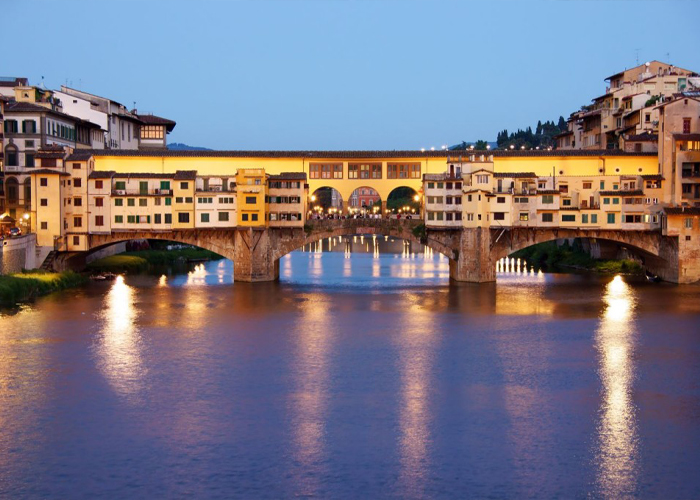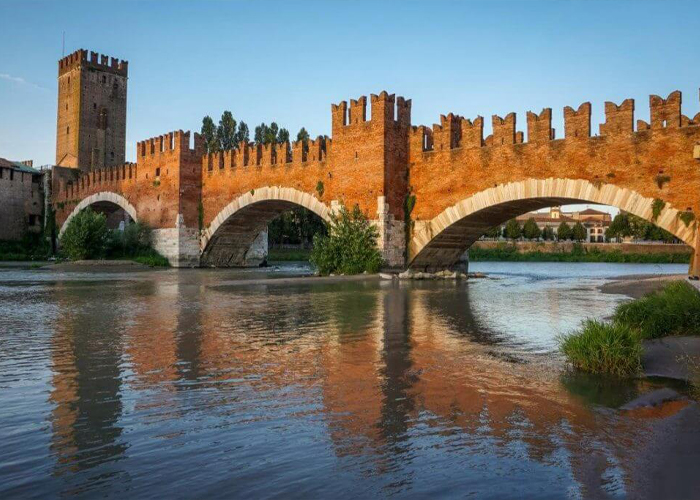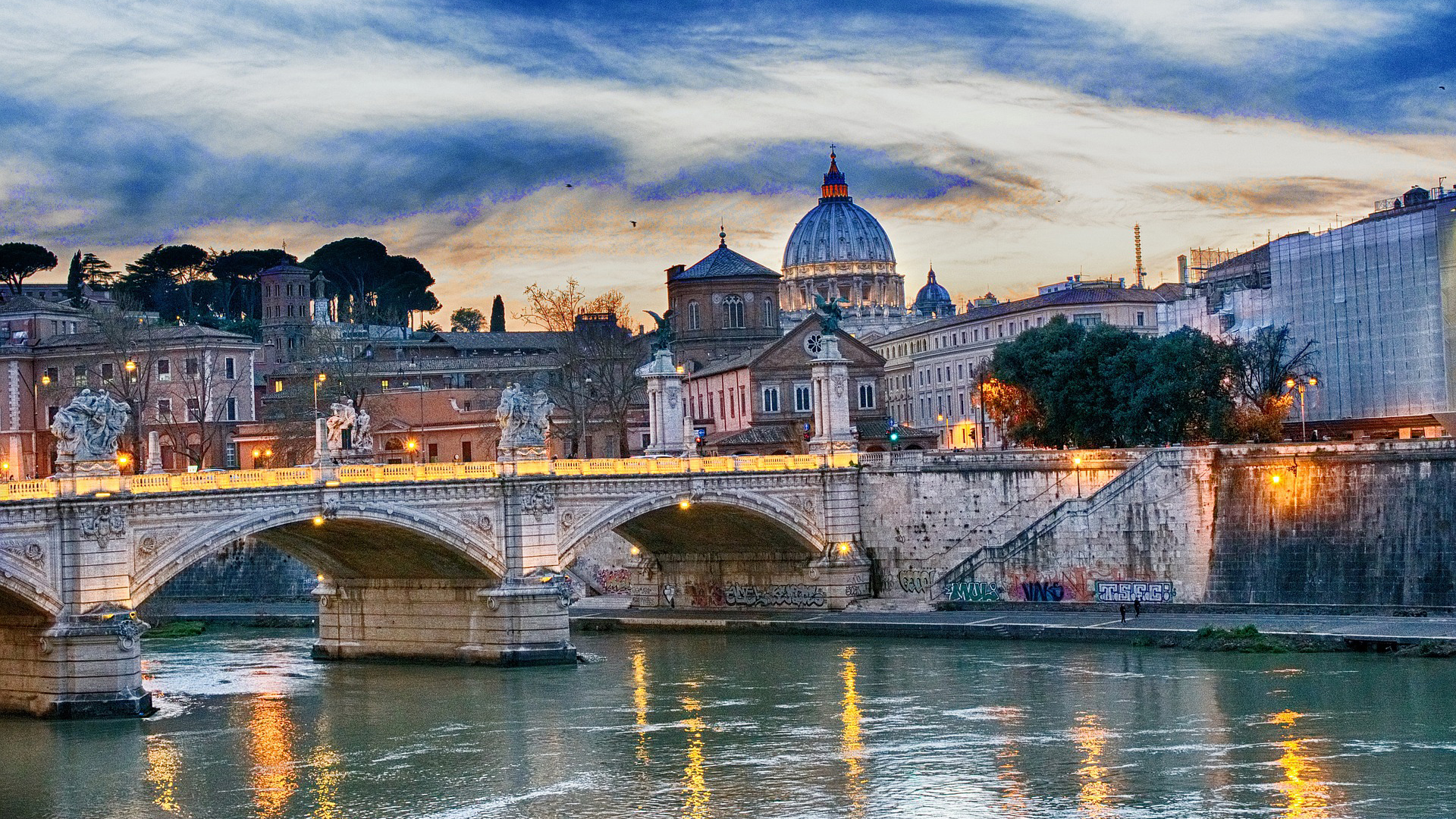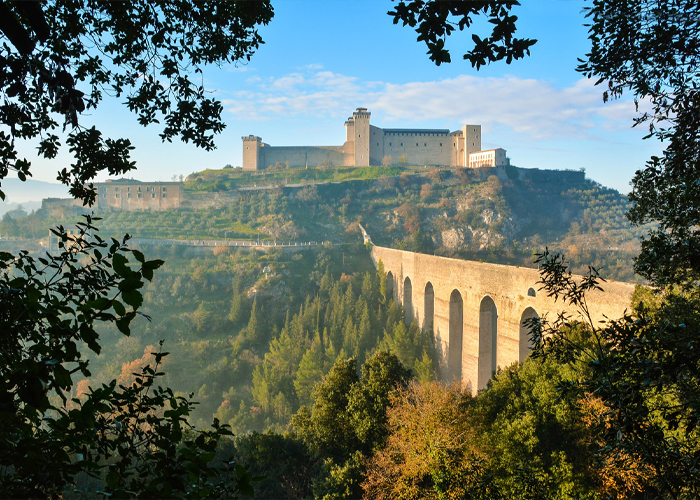For hundreds of years, ancient Romans built solid and functional bridges across rivers, valleys, and rocky gorges. Those structures had two practical tasks: to promote military and commercial mobility and, very often, to transport water to big city centers. The most famous bridges of antiquity, in fact, are also aqueducts. The wonderful Roman Empire’s architecture bequeathed functionality and beauty to bridge building. The master engineers and architects who built bridges in Italy, and many parts of Europe, have gifted Italy with enduring masterpieces. Here’s a sneak preview of the most memorable:
Ponte di Rialto

(Photo credit: getyourguide.com)
Rialto Bridge is one of four bridges crossing the Canal Grande in Venice. It is the oldest and most enchanting, linked to the importance of the Rialto Market located on the East bank of the canal. A splendid covered porch decorates it, under which the shops are arranged. The original structure, a wooden floating catwalk, was built in the eleventh century and called Ponte della Moneta (the Coin Bridge). It was replaced in 1250 by another made of wood as well, and that structure collapsed in the mid-fifteenth century. The current stone bridge construction was completed in 1591, designed by Andrea Da Ponte and Antonio Contin.
Ponte Vecchio

(Photo credit: viaggiart.com)
The bridge over the Arno River is one of the world’s most photographed and famous. Built in 1345 by Taddeo Gaddi, it features a particular and innovative structure made of lowered arches designed to protect it from flood damage. Initially, the Ponte Vecchio hosted popular butchers and greengrocers, and food waste was thrown directly into the river! After the 1565 construction of the Vasari Corridor, those humble shops on the bridge were forced to leave and were replaced by shining jewelry shops. Ponte Vecchio was the only bridge spared by the Germans during their retreat from Italy in WWII.
Ponte Sant’Angelo Bridge

(Photo Credit: Pixabay.com)
Whether referred to as the Pons Aelius (Aelius Bridge), Pons Hadriani (Hadrian Bridge), or Sant’Angelo Bridge, this ancient structure, completed in 134 CE was commissioned by the Emperor Hadrian. The bridge connects Sant’Angelo Castle to the left bank of the Tiber River. In the seventeenth century, Gian Lorenzo Bernini was asked by Pope Clemente to enhance the entrance of the bridge with Baroque masterpiece statues of St. Peter and St. Paul, patron saints of Rome. Along the walk leading to the Castle, Bernini added ten angels carrying articles of the Passion of Christ.
Ponte Scaligero

(Photo credit: thrillingtravel.in)
Verona, the northern Italian city renowned as the setting for Shakespeare’s masterworks such as Romeo and Juliet, is a city highly worth visiting. Among the wonders to admire is the Castelvecchio (Old Castle) building, the city’s most important military construction that belonged to the Della Scala family that ruled the city from 1262 to 1387. The fortified bridge was intended to allow the family to escape northward to Tyrol in the event of a rebellion or coup d’état. Made of red terracotta bricks and stone, the bridge that arches over the Adige River is a prominent example of Gothic architecture. After being destroyed in WWII, the bridge was rebuilt with original materials in 1950.
Ponte Coperto

(Photo credit: pinterest.it)
This magnificent bridge is certainly one of the most spectacular in Italy. The Ponte Coperto (Covered Bridge) or Ponte Vecchio (Old Bridge) crossing the Ticino River in the northern city of Pavia connects the historic city center to the picturesque district of Borgo Ticino. Built in 1352, Ponte Coperto was severely damaged in WWII bombing raids and rebuilt in 1949. In the middle of the bridge stands a small chapel dedicated to San Giovanni Nepomuceno, patron saint of rivers.
Ponte delle Torri
Spoleto’s Bridge of Towers is a masterpiece of late Medieval engineering. The most accredited hypothesis about its origin states that the bridge was rebuilt in the fourteenth century on Roman ruins. Its name comes from the Latin Pons Inter Torres, literally “a bridge between towers.” One of the most important features of this artifact is that it was an aqueduct and a bridge at the same time. Built of local calcareous stone, the bridge oversteps a brook called Tessino with ten arches supported by nine pillars of different sizes. The span is colossal, more than 700 feet, and about 240 feet high. German poet J.W. Goethe mentioned his visit to the bridge in Italian Journey, his book about his travels to Italy in the 1780s.
Barbara Benzoni
Barbara Benzoni was born in Milan and lives between Rome and Tuscany. She is devoted to USA, the land of courage and innovation. She’s Peter's super-lucky mum and Ale's wife. Cinema, art, good food and only beautiful things are the themes of her existence. With a degree in Italian literature and a Masters in Sports Management she can both enjoys books and basketball matches. In 25 years she has been organizing sport events all over the world and she’s been lucky enough to meet the greatest champs ever. Curiosity in everyday life and people are her drivers. Her personal icon is Mohammed Ali : "It's not bragging if you can back it up".



